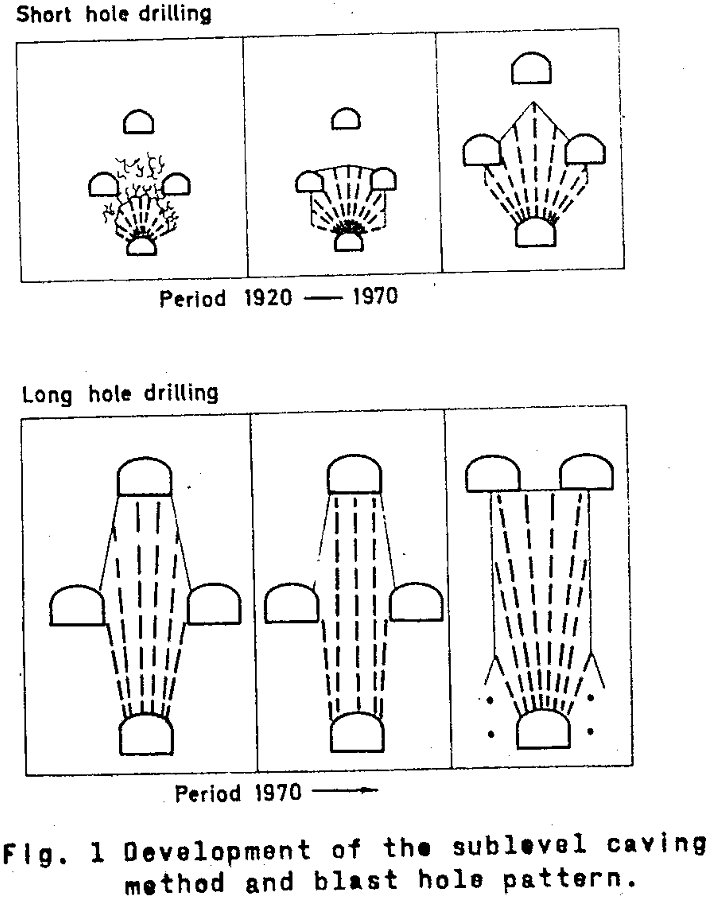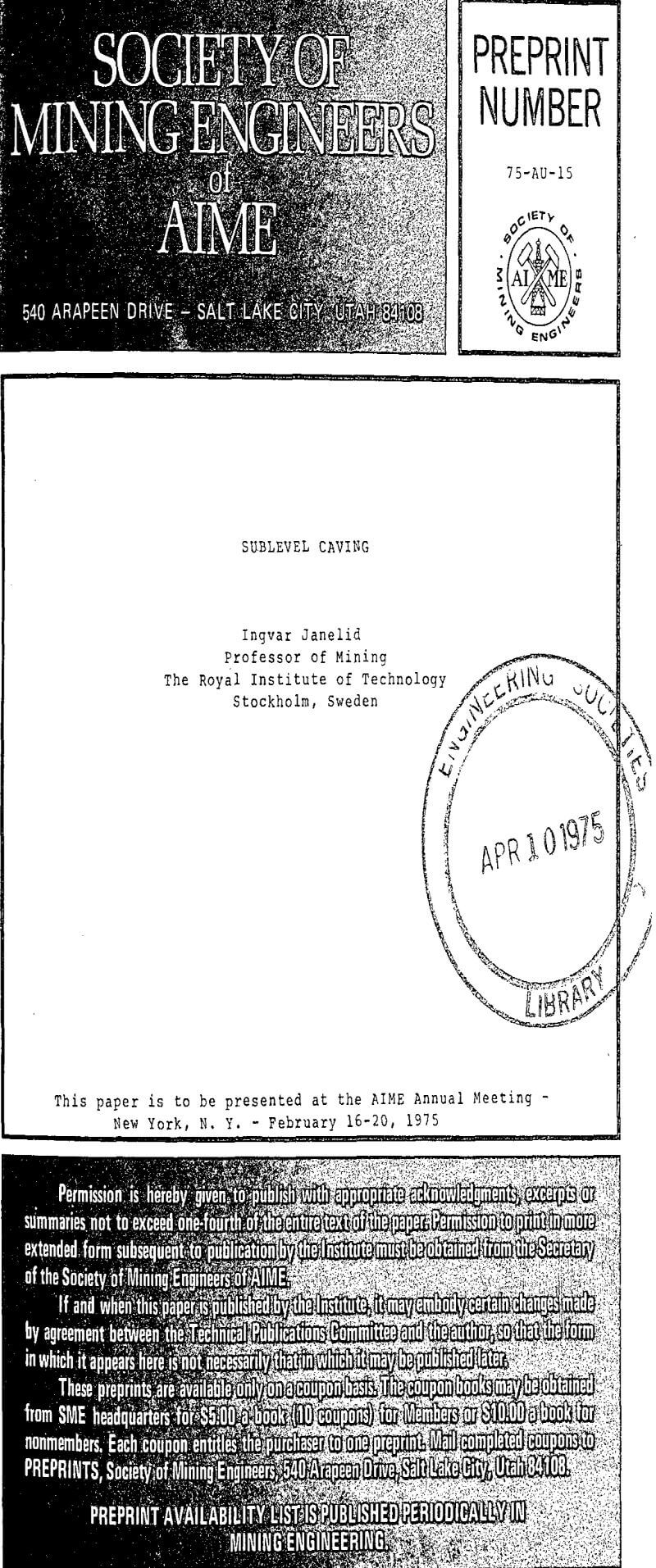Sublevel caving has created through its possibilities of standardizing and mechanizing operations and equipment. Other advantages are that the method can be adapted to orebodies of different shape, size, strength etc., and especially that working conditions can be made safe and relatively comfortable since all work is carried out in drifts. As is well known, the disadvantages of sublevel caving are that ore recovery hardly exceeds 85-90% if waste rock dilution is to be kept below 20-30%. Therefore, the main research and development work has been concentrated on parameters which can affect and reduce these disadvantages.
Caving theories and definitions
In literature, the shape, distribution of particle movement etc. of gravity flow in granular material when loading out from e.g. a silo have been described in detail. Results have been riven from theoretical calculations, model tests and from practice. For fresh-broken rock in e.g. sublevel caving, conditions and results are different due to completely different friction properties, pressure distribution in the material etc. Among other things, this is caused by sharp- edged particles of very variable size and besides, there is a very special degree of packing of the material after blasting.
Research and development
Theoretical calculations and model tests have given a very good knowledge of gravity flow under known and specified model conditions. However, practical application with optimum geometrical layout requires comparison and conversion of knowledge from model to full scale. Therefore, next research step was directly comparable model and full scale tests. The full scale test was carried out at the Grangesberg mine and exactly the same test in model scale 1:20 was carried out at the Division of Mining, The Royal Institute of Technology.
The full scale tests aimed at showing the shape of volume of motion and dividing layer for normal blasted rock, the particle size distribution of which was measured. The tests were not carried out in order to measure ore recovery and waste rock dilution. 14 blasted rounds gave very little variation in height, width and depth of the volume of motion. Particularly striking are the very steep angles of the dividing layers (80-85°), unevenness of the volumes of motion caused by hangups during the first stage of loading and backbreaks of up to 70 cm in the remaining solid ore. Backbreaks occurred in every round in spite of careful explosive distribution and gave extra waste rock dilution when the backbreaks in each round were filled with waste rock.
A solid hanging wall of any inclination and a smooth footwall with an inclination almost the sane as that of the dividing layer affects pressure distribution in the broken rock and thereby also the inclination of the dividing layer. In model tests the inclination of the dividing layer was about 76° – 77° if unaffected by hanging and footwall, A solid hanging wall of 65° inclination above the draw opening changed the inclination of the dividing layer to 64° – 65°.
The knowledge and experience gained during these tests have then been applied for further development of the method with a number of variants. In regular sublevel caving it is obvious that drift location and longhole blasting should be carried out so that dividing layer, location of volume of motion and inflow of waste rock from the sides are controlled as well as possible.
Practical points of view
The objective of all mining is to obtain the highest possible ore recovery with as little waste rock dilution as possible and at lowest possible cost. Sublevel caving has great potential possibilities, but unfortunately it is often not recognized that this method requires very careful planning and control.
In the evaluation of different parameters there are some which cannot be controlled, while others are affected by layout, work procedures or equipment. Uncontrollable factors are the properties of the ore: Size and shape, inclination, tectonics, mineral contents, hardness, fissures and cracks, density etc. Controllable parameters are fragmentation through controlled drilling and blasting, size and shape of sublevel drifts, influence on gravity flow by solid walls and the layout of sublevel height, pillar width etc., which is partly governed by the above parameters.


